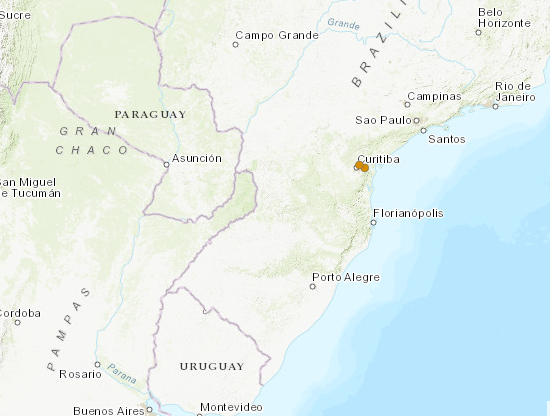Trametopsis brasiliensis


Trametopsis brasiliensis. Photo: Mauro C. Westphalen.
Trametopsis brasiliensis is a saprotrophic fungal species that grows in branches and causes a white rot. So far, there are just two records for the species, being both located in high-altitude Araucaria forest areas inside the state of Paraná. Despite the low record number, it is expected that the species is distributed throughout Araucaria forests in Southern Brazil and that it possibly extends its occurrence through other high-altitude environments within Atlantic Forest. The species is considered rare, as there are intense sampling efforts in Araucaria forest areas in south Brazil, such as São Joaquim National Park and São Francisco de Paula National Park, and there is no occurrence of the species in these areas. T. brasiliensis is threatened mainly by habitat loss, which is caused by urban development, logging, and climate change. Based on this information about population parameters and threats, the species is considered Vulnerable based on the IUCN C2a(ii) criterion.

T. brasiliensis distribution map. https://www.iucnredlist.org/species/209595252/209597363#taxonomy.
References
Westphalen, M., Martins da Cunha, K., Costa-Rezende, D.H., Calaça, F., Alves-Silva, G. & Drechsler-Santos, E.R. 2022. Trametopsis brasiliensis. The IUCN Red List of Threatened Species 2022: e.T209595252A209597363. https://dx.doi.org/10.2305/IUCN.UK.2022-1.RLTS.T209595252A209597363.en. Accessed on 08 August 2022.







